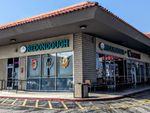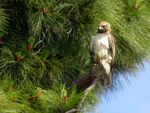These days when I look for a specific eBook I’ll often check the author’s and publisher’s websites first, and see if it’s available from them directly. Or if they have a preferred source.
Here are some places I’ve bought, borrowed, or otherwise legally acquired e-books from:
Free (as in Gratis)
Standard eBooks focuses on making well-formatted books (review) from public domain sources, mostly from Project Gutenberg, and publishing them in major eBook formats like ePub.
Project Gutenberg makes bare-bones documents (review) of public domain material, but produces them in lots of formats including ePub, HTML, and even plain text.
Library Access
Libby and Hoopla both connect to your local library account, and you can check out eBooks and other media. Their mobile apps works well even on my eink tablet. Hoopla also has graphic novels and individual comics, and you can check movies out to watch on something like a Roku.
DRM-Free: Publishers
Dragonmount sells most of Tor’s publications, and Tor provides most (or possibly all?) of their books without DRM on (almost?) all digital bookstores. Yes, even the big ones. Ironically, while I have bought some books from them, I bought the Wheel of Time series somewhere else.
Argyll Productions is a small publisher. I’ve bought some of T. Kingfisher’s books from there, both in ePub and print format.
Apress and its sibling publishers offer science, nature and technical books with watermarking instead of DRM. I bought a C++ book from them a while back, but they’ve since been bought by Springer Nature, and the website is focused on research institutions and inconvenient for individual use.
Smashing eBooks focuses on web design/industry topics, and while I could swear I’ve bought from them before, I can’t find anything with a cursory search. It’s possible I’m just thinking of articles I’ve bookmarked, or books published elsewhere by authors who write for Smashing Magazine.
No-Starch Press publishes computer/tech books. I bought a Humble Bundle of their stuff a while back, but haven’t bought from them directly that I can recall.
Angry Robot and Subterranean Press are a couple more that I think I’ve bought from before, but nothing rings a bell.
A Book Apart used to publsh “books for people who design, write and code” in the tech and web industry, but they shut down in 2024 and returned the publishing rights to the authors.
DRM-Free: General
Humble Bundle always has at least one bundle of books available, using a pay-what-you-want model with the remainder going to a specific charity (or group of charities) per bundle. They’re not always DRM-free, unfortunately. Sometimes they’re codes to redeem at Kobo or some other bookshop. (Even more ironically, the Ursula K. Le Guin bundle last fall was one of these, including The Dispossessed.)
DriveThruFiction publishes a lot of indie comics, RPG guides, and small-press books. I’ve bought a few graphic novels through them, in PDF form, and most of those were Kickstarters that offered the finished products through DriveThru.
Smashwords also sells mainly small press. I think I’ve only bought one book from there, and it was a while ago.
See Also:
General EBook Stores
Places that sell both DRM-encumbered and DRM-free books. Most of them sell ePubs, and most of them have their own mobile apps for accessing your purchases (including the DRM’ed books). Most of the apps work fine on my phone and Android-based Boox Poke3 eink tablet which is my preferred reading device, except where noted.
eBooks.com focuses on business ethics (review) and has a good selection. Books with DRM are readable on their website or on their app. The app is kind of bare bones compared to Kobo or Kindle: it stays out of the way and just lets me read instead of trying to sell me more books first!
Bookshop.org supports indie bookstores (review). You can designate a local shop of your choice to get part of your print or digital purchase. At first they only sold print books, but they finally added eBooks in January 2025. The selection’s comparable to eBooks.com, but their app just doesn’t work right on the Poke3. At least not yet.
Kobo is a solid alternative to Kindle (review), from the eBook selection through apps and hardware. The app works well on my eink tablet without too much tweaking, though it still wants to sell me more books before I can open the one I want to read.
Barnes and Noble’s Nook ecosystem is like Kindle, but I’ve only ever bought a couple of books on there to see how the app works on the Poke3 (it’s fine). By the time I started looking for a non-Kindle system, Kobo was partnered with IndieBound and Nook was just another silo.
I haven’t used Google Books in ages, or Apple Books much at all, so I can’t really say much about them except if you’re looking for alternatives to Amazon, you’re probably also looking for alternatives to Google and Apple.
Kindle, of course, is owned by Amazon, which has been the subject of so much criticism over the years that the Wikipedia article is 32 pages long when exported to a PDF, plus another 38 pages of reference citations. I won’t go into detail, because if you’re ok with Amazon in general or Kindle specifically, you probably aren’t reading this page anyway (or stopped early on). But most recently, the item that prompted me writing this list, they’re holding a giant discount sale during Independent Bookstore day.
A conicidence, I’m sure. 🙄
See Also:




